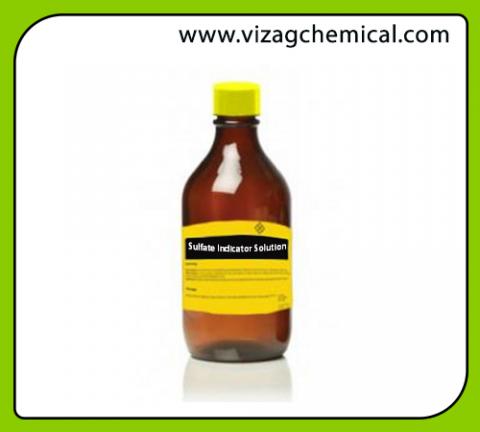Primary tabs

Sulfate Indicator Solution
Sulfate Indicator Solution principally based on the precipitation of sulfate ion in such a manner as to form sulfate crystals of uniform size. The resultant turbidity is measured at a wavelength sensitive to turbidity on a photometer.
Other valuable Apparatus Required for Sulfate Test ::: Filter photometer complete with assorted laboratory glassware.
Chemicals Required
Glycerol Sulfate Solution ( The glycerol sulfate solution is used to maintain proper crystal size of pricipitated SULFATE partice )
Sulfate Indicator Solution ::: RXSOL-60-6198-500
Sulfate Standard
Procedure of Test
This procedure uses a wavelength of 420 nm and a cell with a light path of approximately 10-mm. First prepare a calibration curve for the photometer using successive dilutions of the sulfate standard to adequately cover the range of sulfate in the samples to be tested. The dilutions of the standard should be treated in exactly the same manner as that shown below for analysis of the water samples. Using a 50-ml plastic graduate, add 50 ml of sample to a 125-ml glass flask. Pipet 10 ml of glycerol sulfate solution into the flask and swirl the solution. Pipet 5 ml of distilled water into the flask, swirl the solution and use this solution to set the photometer at zero absorbance. Discard the solution and rinse the flask with distilled water. Into a second 50-ml sample, pipet 10 ml of glycerol sulfate solution and swirl. Adjust the temperature of the sample to 70 to 75F, and pipet 5 ml of Sulfate Indicator Solution (RXSOL-60-6198-500) into the same flask. Stir the solution by rotating a rubber paddle between the palms at moderate speed for exactly five seconds. Wait exactly five minutes, and then measure the absorbance on the photometer.
Calculation of Results The sulfate concentration in parts per million as SO4 is obtained by reference to the prepared sulfate calibration curve.
Limitations of Test
Color or large amounts of suspended matter will interfere with this method, but some suspended matter may be removed by filtration. Also the presence of color and suspended matter is compensated for to some extent by the blank determination. Silica in excess of 500 ppm will interfere, and in samples containing large amounts of organic material, it may not be possible to precipitate barium sulfate satisfactorily.
